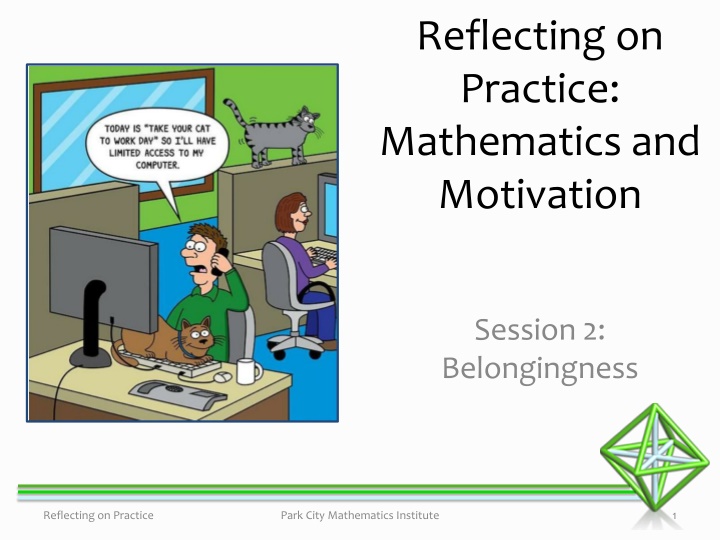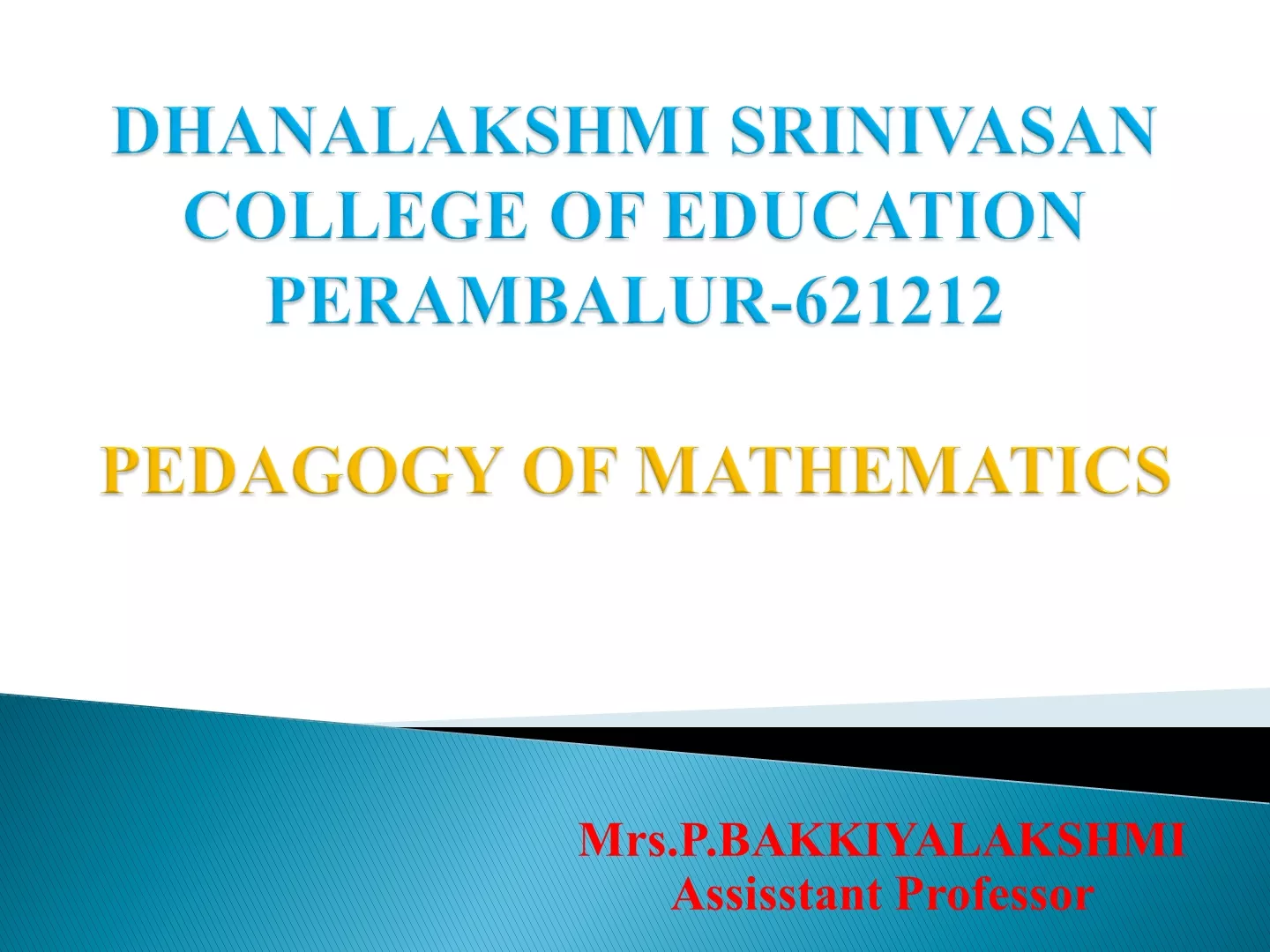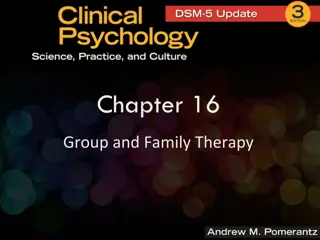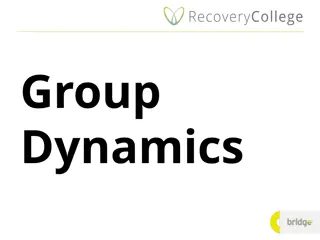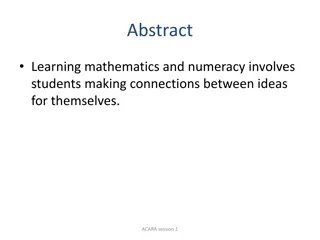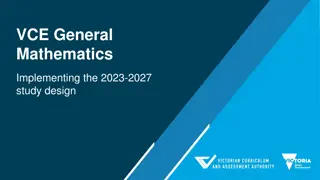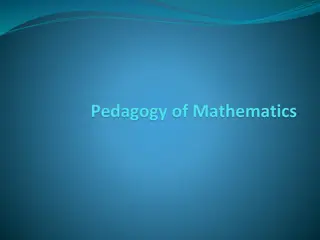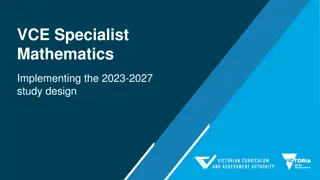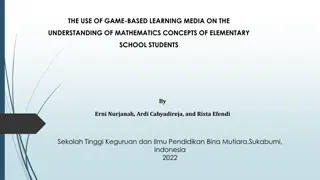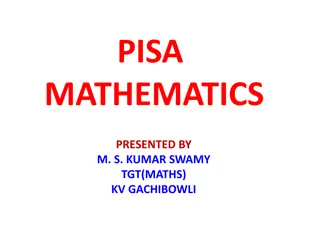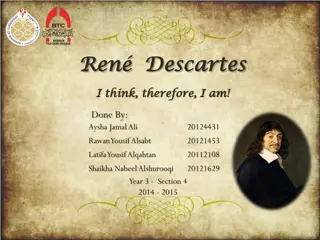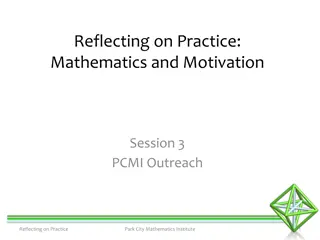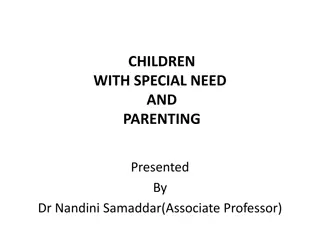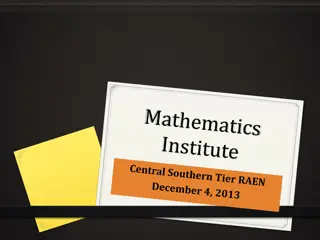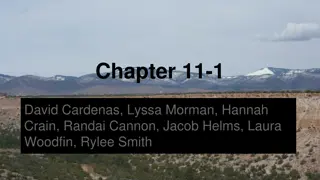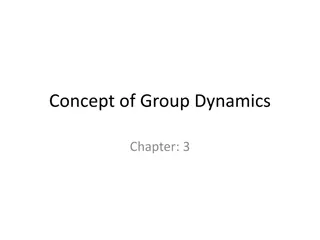Enhancing Mathematics Learning Through Belongingness and Group Dynamics
Explore the concept of belongingness in mathematics education, focusing on the importance of positive interactions for student well-being. Discuss the advantages and disadvantages of visibly random grouping and group work at vertical non-permanent spaces. Understand how belongingness contributes to student learning and success. Engage in thought-provoking talking points on teaching practices.
Download Presentation

Please find below an Image/Link to download the presentation.
The content on the website is provided AS IS for your information and personal use only. It may not be sold, licensed, or shared on other websites without obtaining consent from the author.If you encounter any issues during the download, it is possible that the publisher has removed the file from their server.
You are allowed to download the files provided on this website for personal or commercial use, subject to the condition that they are used lawfully. All files are the property of their respective owners.
The content on the website is provided AS IS for your information and personal use only. It may not be sold, licensed, or shared on other websites without obtaining consent from the author.
E N D
Presentation Transcript
Reflecting on Practice: Mathematics and Motivation Session 2: Belongingness Reflecting on Practice Park City Mathematics Institute 1
Definition of Belongingness from Motivated "When students experience frequent, pleasant interactions with the sense that others are concerned about who they are and for their well-being." (Horn, 2017) 3
https://mslwheeler.wordpress.com/2014/11/09/visibly-random-groups-vertical-non-permanent-surfaces/https://mslwheeler.wordpress.com/2014/11/09/visibly-random-groups-vertical-non-permanent-surfaces/ Reflecting on Practice Park City Mathematics Institute 4
At your tables... ...talk about what you see as the advantages of visibly random grouping? What do you see as the disadvantages? 5
https://mslwheeler.wordpress.com/2014/11/09/visibly-random-groups-vertical-non-permanent-surfaces/https://mslwheeler.wordpress.com/2014/11/09/visibly-random-groups-vertical-non-permanent-surfaces/ Park City Mathematics Institute Reflecting on Practice 6
At your tables... ...talk about what you see as the advantages of having students working with a group at the vertical non-permanent spaces? What do you see as the disadvantages? 7
"Belongingness is a crucial precursor to students' learning and success. " (Levett-Jones, Lathlean J., 2009) 8
Talking Points (Elizabeth Statmore in Horn, 2018) I AGREE I DISAGREE I AM UNSURE http://cheesemonkeysf.blogspot.com/2014/07/tmc14- gwwg-talking-points-activity.html Reflecting on Practice Park City Mathematics Institute 9
Talking Points (Elizabeth Statmore in Horn, 2018) In your group of three, and one by one state whether you agree, disagree, or are unsure about the statement and give a reason for your answer. Go around a second time repeating whether you agree, disagree, or are unsure, with the option to change your mind explaining why you changed your opinion. This time the group may ask a question or offer another idea. Go around again to see where everyone has landed. I AGREE I DISAGREE I AM UNSURE Reflecting on Practice Park City Mathematics Institute 10
Statement: Company A is the best place to work. Two companies, A & B, hire new college graduates as accountants at entry-level positions. In 2009 the starting salary for an entry-level accountant position was $36,000 a year at both corporations. The boxplots show the salaries of these employees 5 years after starting with the companies. [AP Statistics 2015 #1]
Statement: 1.9 is equal to 2 _ 12
Statement: Every linear function has a y- intercept.
Debrief Consider if you ran this protocol in your classroom. What are some benefits you expect? What are some challenges? 15
Read the italicized excerpt from The Atlantic article . As you read, star a piece of the article that resonates with you. After everyone has read, share your thoughts with a partner at your table. 16
Wise Feedback I m giving you these comments because I have very high expectations and I know you can reach them. 17
To give effective feedback, the teacher needs to know the student to understand what feedback the student needs right now. And to receive feedback in a meaningful way, the student needs to trust the teacher to believe that the teacher knows what he or she is talking about and has the student's best interests at heart. Without this trust, the student is unlikely to invest the time and effort needed to absorb and use the feedback. -Dylan Wiliam 18
How do we help build community and a sense of belongingness in our classrooms? Notice & Wonder Visibly Random Grouping (VRG) Vertical Non-Permanent Surfaces (VNPS) Talking Points Wise Feedback 19
References Black, P. Harrison, C., Lee, C., Marshall, E., & Wiliam, D. (2004). Working Inside the Black Box: Assessment for Learning in the Classroom, Phi Delta Kappan, 86 (1), 9-21. University of Pittsburg. Black, P. & Wiliam, D. (1998). "Assessment and classroom learning". Assessment in Education: Principles, Policy & Practice 5 (1). College Board Advanced Placement Statistics 2015 Released Itehttps://secure-media.collegeboard.org/digitalServices/pdf/ ap/ap15_frq_statistics.pdf. Horn, L. (2017). Motivated. Reston VA: National Council of Teachers of Mathematics. https://mslwheeler.wordpress.com/2014/11/09/visibly- random-groups-vertical-non-permanent-surfaces/ Reflecting on Practice Park City Mathematics Institute 20
References https://ed.stanford.edu/sites/default/files/the_mentors_dile mma.pdf Levett-Jones T & Lathlean J (2009) The ascent to competence conceptual framework: an outcome of a study of belongingness. Journal of Clinical Nursing 18, 2870-2879. Liljedahl, P. (2017). Building thinking classrooms: Conditions for problem solving. In P. Felmer, J. Kilpatrick, & E. Pekhonen (eds.) Posing and Solving Mathematical Problems: Advances and New Perspectives. New York, NY: Springer. Toch, T & Headden, S. (Sep 3, 2104) How to motivate students to work harder. The Atlantic https://www.theatlantic.com/education/archive/2014/09/ho w-to-get-insecure-students-to-work-harder/379500/ Reflecting on Practice Park City Mathematics Institute 21
References Wiliam, Dylan (2016). The Secret of Effective Feedback. Educational Leadership, April 2016, Vol 73, No 7. Wiliam, Dylan (2014). Is the Feedback You've Giving Students Helping or Hindering? Dylan Wiliam Center. Nov 29, 2014. Wiliam, Dylan (2011). Embedded formative assessment (Kindle Locations 1002-1013). Ingram Distribution. Kindle Edition. Wiliam, D. (2006) Assessment for learning: The why, what, and how. Presentation at Cambridge Assessment Network, Cambridge UK 22
